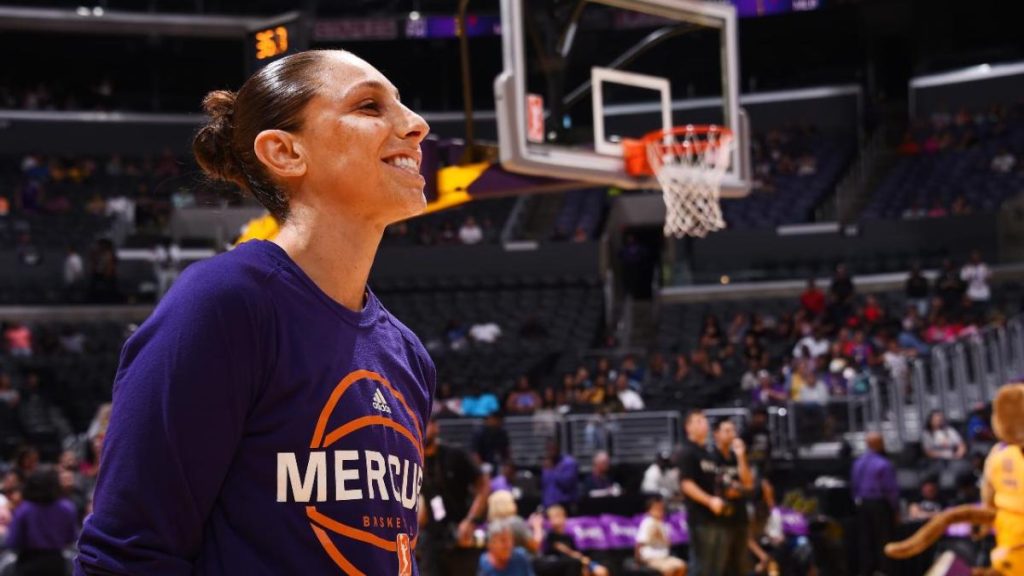In recent years, the WNBA has emerged as one of the most successful and empowering professional sports leagues for women. With the rise of social media, increased visibility, and an unwavering commitment to equality, the WNBA is no longer just a league for basketball fans—it has become a symbol of empowerment and resilience for women athletes around the world.
A Historic Rise in Popularity
While the WNBA was initially met with skepticism when it was founded in 1996, the league has steadily built a fanbase and transformed into a powerhouse of female sports. Throughout the years, WNBA athletes have shown that they are not only skilled basketball players but also strong advocates for equality, social justice, and gender representation. This combination of athletic excellence and activism has significantly raised the profile of the league, particularly in the past decade.
One of the main factors contributing to the WNBA’s growing popularity is the increase in media coverage. With major networks like ESPN, ABC, and ESPN+ broadcasting games live, the league is becoming more accessible to a global audience. This newfound attention has also attracted younger generations who are passionate about supporting female athletes and want to see more representation in professional sports.
Additionally, the WNBA’s robust presence on social media platforms has further amplified its visibility. Through Instagram, Twitter, and TikTok, athletes have built strong, engaged communities where they share behind-the-scenes glimpses into their lives and connect with their fans. This accessibility has not only boosted the league’s popularity but has also empowered WNBA athletes to shape their own narratives.
The Role of Activism in the WNBA’s Success
One of the most notable aspects of the WNBA’s rise has been its players’ commitment to activism. For years, WNBA athletes have used their platform to speak out on issues ranging from racial equality and social justice to gender equity and LGBTQ+ rights. This activism has played a pivotal role in garnering attention for the league, as athletes like Breanna Stewart, Sue Bird, and Elena Delle Donne have become voices for change both on and off the court.
Perhaps the most significant moment of activism in recent WNBA history came during the 2020 season, when the league took a firm stance in support of the Black Lives Matter movement. The WNBA led the charge by dedicating the season to social justice initiatives, with players wearing warm-up shirts that said “Black Lives Matter” and “Say Her Name,” in honor of the lives of Black women who have been victims of police violence.
The league’s efforts didn’t stop at social media posts and slogans. WNBA players also made a concerted effort to use their platform to encourage voting in the 2020 U.S. presidential election, while also advocating for the Breonna Taylor and George Floyd cases. These powerful moments helped demonstrate that the league’s commitment to social justice is about more than just words—it’s about tangible action.
This willingness to take a stand on crucial social issues has garnered support from fans who value the league’s role as a force for change. The WNBA’s athletes aren’t just on the court competing for championships—they’re using their voices to spark meaningful conversations and bring awareness to critical issues.
Equal Pay: A Continuing Battle
Another area where the WNBA has made significant strides in recent years is in the fight for equal pay. Despite the league’s progress, women’s professional sports have historically faced financial disparities compared to their male counterparts. For many years, WNBA players earned far less than male athletes in leagues like the NBA, despite having comparable skills and dedication.
In recent years, however, the WNBA has taken steps toward closing the pay gap. In 2020, the league and the Women’s National Basketball Players Association (WNBPA) reached a groundbreaking collective bargaining agreement (CBA) that increased player salaries, improved working conditions, and enhanced travel accommodations. The new CBA also included provisions for more player autonomy, such as increased maternity leave and a higher percentage of revenue for the players.
While there is still work to be done in terms of achieving full pay equality, the new CBA marks a crucial step toward achieving fairness for women in professional sports. Players like A’ja Wilson, Diana Taurasi, and Candace Parker have led the charge for equal pay, making their voices heard both within the league and across the wider sports community.
The Future of Women’s Sports and the WNBA
Looking ahead, the WNBA is well-positioned to continue its rise as one of the most influential leagues in women’s sports. The league’s commitment to gender equality, diversity, and social justice has made it a trailblazer for other women’s leagues around the world. And as more fans tune in to watch high-level women’s basketball, the potential for growth is enormous.
The WNBA’s success has also helped inspire the next generation of female athletes. Young girls who grew up watching WNBA games now dream of playing in the league and joining the ranks of their basketball heroes. This, in turn, has created a growing pipeline of talent, as youth basketball programs for girls are seeing a surge in participation.
Moreover, the league’s increasing presence on streaming platforms like ESPN+ and YouTube is expanding its accessibility to global audiences. As more international players join the league and make their mark, the WNBA is becoming a truly global sports phenomenon.
The future of the WNBA is bright, and as the league continues to expand its reach and influence, it will undoubtedly inspire further investments in women’s sports. With the continued rise of athletes like Sabrina Ionescu, Jackie Young, and Skylar Diggins-Smith, the WNBA is laying the foundation for an era of gender equality and empowerment that will impact future generations of athletes.
